








Is there a cure to diabetes? This is a burning question that comes from many across the world, and while there isn’t a cure for diabetes New York just yet, there are encouraging signs. There actually is some existing evidence that intermittent fasting could have a large effect on diabetes management, increasing longevity, and possibly preventing the condition as a whole. Studies were conducted in the British Journal of Diabetes & Vascular Disease 2013 article, “Intermittent fasting: a dietary intervention for prevention of diabetes and cardiovascular disease?”
The authors of the article found that intermittent fasting can actually lessen the chance of not only type 2 diabetes, but heart disease and obesity. As one can see, this is a way to help people manage their weight. The researchers reported pretty good compliance and described the fasting as a “clinically relevant therapeutic approach.”
To help with a cure for diabetes New York here’s a few options for intermittent fasting. These include fasting on alternate days or not eating for 16 hours (last meal at 8pm and first meal the next day at 1pm). Something else to do is cutting one meal per day when you find that your weight has gone up that day.
While fasting can help prevent the development of diabetes, it also helps current diabetics manage their condition. This specific type of fasting improves blood sugar and insulin levels as well as insulin sensitivity. The study found that intermittent fasting is also able to lessen inflammation and improve blood pressure and blood lipid levels. This method comes with low risks, and is extremely cost effective, unlike many medications.
Along with fasting, there has been successful research conducted on the addition of chromium to the diet to help diabetes. The National Institutes of Health says that chromium is known for enhancing the action of insulin. Insulin is what keeps blood sugar levels from getting out of hand. It may be beneficial to begin a program of chromium intake and fasting.
So while there is no current cure for diabetes in New York, research and studies are continuing to push forward for a breakthrough.
If you are in pain, contact us now. We have three simple ways you can make an appointment at our Back and Body New York chiro office:
Call now on (212)371 2000 or text (315)873-3095 or email us at Yo**********@***********NY.com
 When you work all day writing in front of a desk or working on the computer, it’s hard to remain mindful of your posture. The more you concentrate on what you’re doing, the more your back hunches forward. You can get completely used to such poor posture that even when you’re no longer working, you continue to slouch.
When you work all day writing in front of a desk or working on the computer, it’s hard to remain mindful of your posture. The more you concentrate on what you’re doing, the more your back hunches forward. You can get completely used to such poor posture that even when you’re no longer working, you continue to slouch.
At first, it would seem like it’s the most relaxed position for your body, but eventually, your back will protest and you’ll feel it;there will be tension knots at the base of your neck and around your shoulders. Plus, those “blunt” back pains will become more frequent, and then they’ll morph into more complicated aches – the type that radiates through different parts of the body. And not only these — when you look at yourself in the mirror, you will notice that your body doesn’t look as good as it used to.
One thing’s for sure: Slouching doesn’t do the body any good, and if you want to prevent all the negative effects it causes, it’s best to correct your posture now. But breaking a bad habit is rarely easy; it requires strong commitment. As simple as posture correction may seem, it can definitely be a struggle for it’s not just limited to the way you sit and stand – the correct posture will require you to train your body to sit, stand, walk, lie down and carry things holding the right neutral position, where there’s the least strain placed on all the muscles and ligaments. You’re going to have to fully modify your movements and even rely on “external” support.
When it comes to external support, a chiropractor or pain specialist may be of great help, especially in helping you understand what’s wrong with your posture that’s causing you pain. They will observe how you move your body as you sit, stand and walk. After identifying what’s wrong with your posture, they will then recommend a number of solutions for you to try. These can include: better footwear; binders; different lumbar support products like pillows and ergonomically designed chairs; exercises; diet; the correct way of working on the computer; the right alignment of arms and wrists; chiropractic tune-ups; and so much more.
Now, if it’s been determined that your bad posture is the result of a more complicated condition like scoliosis, osteoporosis, or spinal injury, the posture correction solutions are likely to be more radical. A corrective surgical procedure, or long-term wear of those really stiff back braces, may be recommended to you. These are both effective not only in restoring the right posture of your body but also in effectively treating pain.
Whether your poor posture was caused by bad habits, an injury or a complex health condition, you can benefit greatly from immediate posture correction – pains will cease, you will move more comfortably, and the quality of your life will also improve.
 When it comes to back pain care NYC residents should know that specialists employ a multi-pronged approach. A tailored back care program will almost always involve physical therapy. Upper East Side doctors generally prescribe physical therapy to their patients when the back pain has lasted for two to six weeks.
When it comes to back pain care NYC residents should know that specialists employ a multi-pronged approach. A tailored back care program will almost always involve physical therapy. Upper East Side doctors generally prescribe physical therapy to their patients when the back pain has lasted for two to six weeks.
For patients suffering from back pain, physical therapy allows them to achieve three goals. First, the therapist can help ease the pain. Alongside this, therapy allows a patient to regain normalcy in his daily routines. Finally, a seasoned therapist educates his patients regarding exercises and correct movements that can prevent the back pain from recurring.
Treatment begins with a consultation wherein the therapist assesses the patient’s conditions. From there, he will tailor a specialized treatment plan. Typically, a treatment plan is comprised of two components: passive and active physical therapy.
Passive therapy refers to modalities or procedures which are done to a patient. These may include cold laser therapy, medical massage, chiropractic, acupuncture, ultrasound, spinal decompression and flexion-distraction.
These passive modalities are supplemented by back pain exercises. One of the simplest yet most effective exercises for back pain is hamstring stretching. A therapist can also prescribe dynamic lumbar stabilization or core strengthening exercises that a patient can perform in as little as 15 to 20 minutes a day. Therapists also encourage their patients to perform low-impact aerobic exercises like walking, swimming and cycling, which aid in the reduction of pain.
If you are suffering from back pain, the best time to consult a physical therapist is at the soonest possible time. Putting off your appointment with a physical therapist when your pain has become unbearable can lead to long-term disability, permanent damage and costly remedies like surgery.
With the aid of a physical therapist, a patient can learn how to intelligently deal with his back condition. This means learning how to pace oneself when the pain is at bay and how not to be sidelined by pain when it attacks.
In seeking the help of a physical therapist, it is important to look past the quick gains that one can reap. If you have been suffering from back pain for weeks, the appeal of opting for the shorter route is understandable. However, a reputable physical therapist understands that the more important goal that a patient needs to achieve is normalcy in his daily routines. This can be attained through small, consistent gains over a period of time.
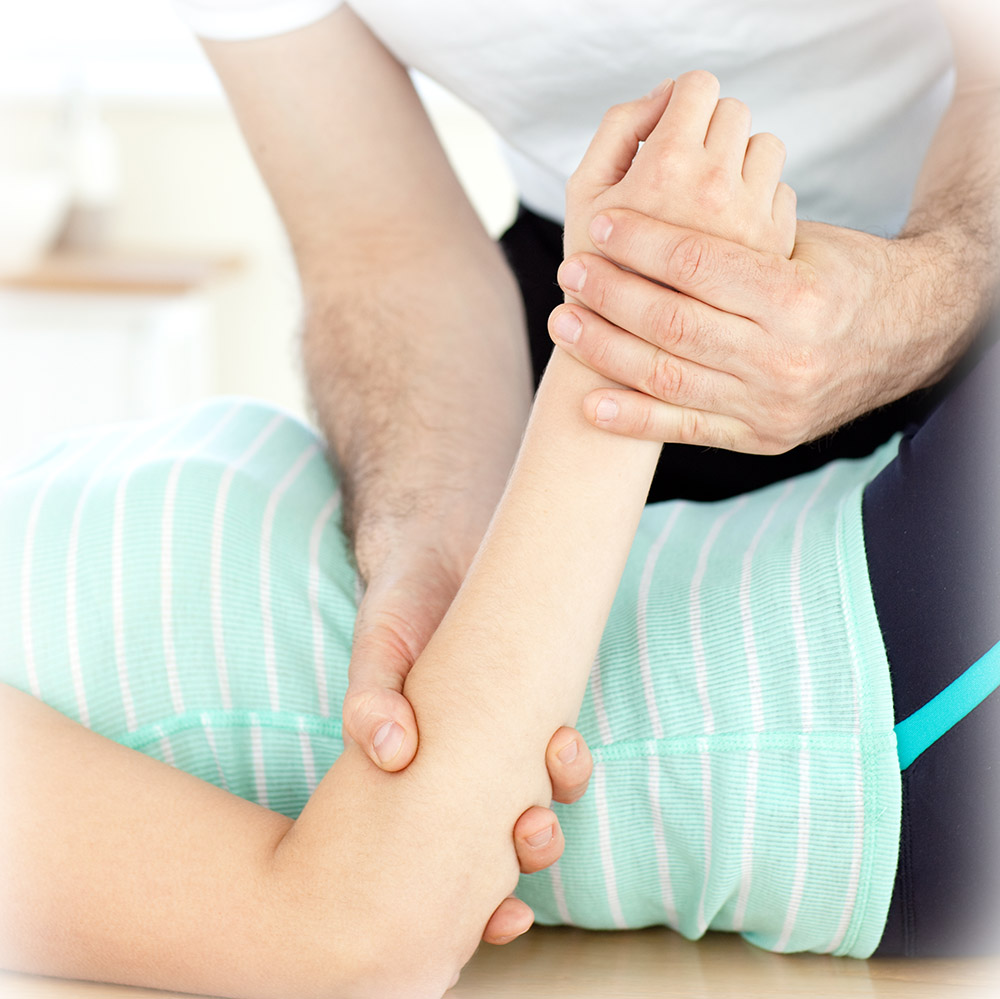 Conditions like carpal tunnel syndrome, shin splints, shoulder pain, sciatic nerve pain, plantar fascists, knee problems and tennis elbow can be attributed to the overuse of muscles. When muscles and other soft tissues are subjected to overuse, three notable changes occur. First of these are acute conditions like pulls, tears and collisions. The second of these are micro-trauma or the accumulation of small tears. Finally, overuse can lead to a condition known as hypoxia or the deprivation of oxygen in affected muscles and soft tissue.
Conditions like carpal tunnel syndrome, shin splints, shoulder pain, sciatic nerve pain, plantar fascists, knee problems and tennis elbow can be attributed to the overuse of muscles. When muscles and other soft tissues are subjected to overuse, three notable changes occur. First of these are acute conditions like pulls, tears and collisions. The second of these are micro-trauma or the accumulation of small tears. Finally, overuse can lead to a condition known as hypoxia or the deprivation of oxygen in affected muscles and soft tissue.
These conditions can lead to the development of scar tissue. Scar tissues limit the free movement of muscles and soft tissues by binding and tying these up. As scar tissues accumulate, they make the muscles weaker and shorter. It can also lead to tendonitis and trapped nerves. In turn, these lead to decreased range of motion, pain and weakness. In the case of trapped nerves, a patient may report symptoms like tingling and numbness in the affected areas.
One treatment option for patients suffering from issues related to soft tissues is the Active Release Technique NYC residents should know that ART has been proven to quickly and permanently remedy injuries and conditions that result from overused muscles.
ART was developed by Dr. P. Michael Leahy, DC, CCSP. Dr. Leahy refined the technique and patented it. Today, he teaches and certifies other health care professionals who seek to use the technique.
In his own personal practice, Dr. Leahy observed that the changes in overused muscles can be detected through touch. Furthermore, he noticed that the muscles, tendons, ligaments, fascia and nerves responded differently to a variety of soft tissue works.
With ART, Leahy developed a treatment method that relies on the effective partnership between patients and their doctors. A typical ART session entails both an examination and treatment. First, the ART practitioner manually evaluates for the tightness, texture and movement of the muscles and soft tissue. On the patient’s part, he must perform the movements directed by the ART practitioner. At the same time, the practitioner will apply tension at the specific problem area. Leahy has developed and teaches over 500 movements, all of which are specific to ART.
ART practitioners have invested time and effort in learning over 500 moves developed by Dr. Leahy. On top of that, practitioners need to learn how to feel the texture, tension and movement of the affected soft tissue.
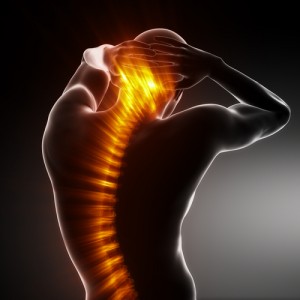 Twelve pounds — this, according to the American Chiropractic Association, is the average weight of someone’s head.
Twelve pounds — this, according to the American Chiropractic Association, is the average weight of someone’s head.
Your neck, and your neck alone, supports that weight (and probably more for others); add this to the fact that the flexibility to move your head every which way leads to potential injuries, and you have got one recipe for neck pain.
While some pain issues could only be bothersome, others may signal a more severe medical issue.
In either case, you will want to address the discomfort when the numbness, the stiffness, or the throbbing pain begins to affect your everyday tasks.
Here is a quick list of things to do when you’re faced with neck pain.
Do seek a specialist for your neck pain.
Proper neck pain care NYC residents will want to know, starts off with the appropriate diagnosis. Unless you’ve been in an accident involving your neck, without knowing what is truly causing your cervical spine(i.e., your neck) great discomfort, the course of your treatment might not be so precise or effective. A physician or therapist specializing in neck injuries would be able to alleviate your pain and allow you to recover from the injury.
Do try to reduce stress.
Emotional tension can contract and tighten muscles, which leads to stiffness and pain. Yes, stress cannot be avoided, especially if you work in a high-pressure environment, like emergency health care or investment banking. But you can try to reduce the impact of stressful situations by practicing meditation and doing breathing exercises.
Do limit high-risk activities.
You will want to be very honest with your chiropractor or physical therapist about the level of activities that you do. Certain activities like heavy weight lifting, doing overhead work, or sleeping on a pillow that’s too high or too low could aggravate your neck pain. You’ll want to be as detailed as possible about your activities to the physician so that a determination can be made about whether to limit them or not.
Do practice good posture.
Postural stress can also cause neck pain or contribute to its intensity. Be conscious of how you sit when you work or stand or even watch something on the screen.
Do ask your specialist about your options for traditional and innovative treatments.
Physical therapy is an effective and traditional way of addressing neck pain. But with the advancements in spinal health, you now have wide-ranging options for treatment to speed up recovery. Ask your specialist about Active Release Technique (ART), Graston Technique, and other innovative treatments that resolve neck pains.
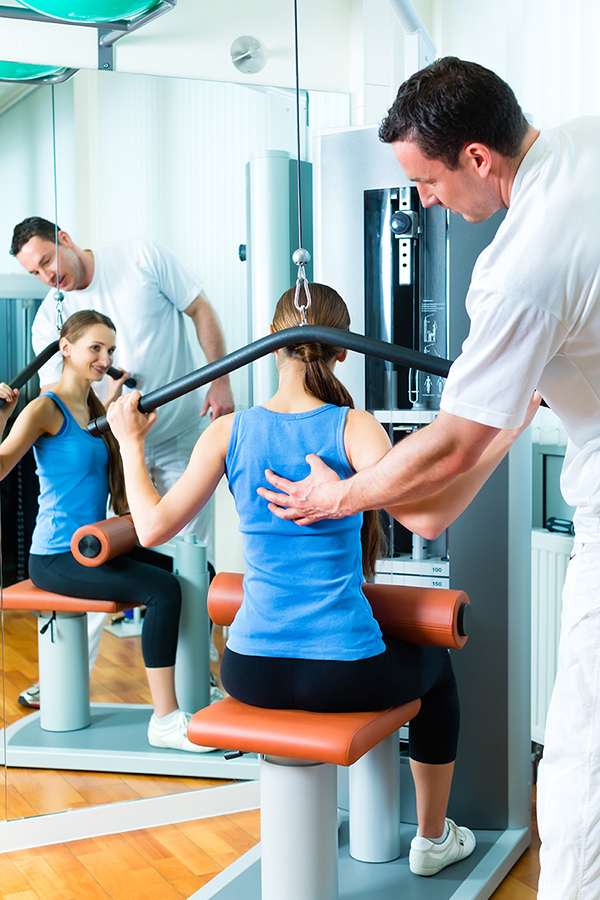 Even in the most developed countries where people are expected to afford quality healthcare, patients suffering from physical pain can still fail to get the right care and treatment they need. For instance, one study estimated that around 108 million adult Americans suffer from a musculoskeletal injury that lasts for more than three months.Experts say this reveals that the “grin and bear it” attitude about pain is prevalent in many cultures, even if there are ways and resources to address it.
Even in the most developed countries where people are expected to afford quality healthcare, patients suffering from physical pain can still fail to get the right care and treatment they need. For instance, one study estimated that around 108 million adult Americans suffer from a musculoskeletal injury that lasts for more than three months.Experts say this reveals that the “grin and bear it” attitude about pain is prevalent in many cultures, even if there are ways and resources to address it.
But pain shouldn’t be simply accepted as a “norm,” even if millions of people around the world experience a form of physical discomfort or agony at least once in their life.Pain affects every aspect of life, so it makes sense to find the best way to minimize, reduce and eliminate it. Living a pain-free life is essential if you want to continue to work for yourself and your loved ones, perform to the best of your ability, and enjoy fulfilling personal relationships.
If you’re suffering from a recent pain or have been enduring a chronic condition for a long time now,one of the most reliable pain management approaches you can try is physical therapy Downtown NY health experts say. Don’t rely on at-home remedies alone; they might help relieve the pain for a while, but you will still need to address the root cause – or risk irreparable damage or long-term consequences to your health.
When you go to a physical therapy clinic, the doctor will require you to undergo a complete diagnostic test. They need to know about your unique condition as a patient so they can determine the right treatment program for you.Do you need relief from the pain and the strain? Are you suffering from an injury that needs to be treated immediately? Is your complaint related to an existing condition? Will you need other treatment approaches that will complement your physical therapy sessions? Are you taking medications that might affect your recovery? All these and more will be considered when coming up with a specialized treatment plan for you.
Physical therapy is not rigid in its setup and can be done in various facilities, such as hospitals, emergency rooms, nursing homes, outpatient clinics and more. However, this doesn’t mean that anyone can practice physical therapy midtown NY experts say the field has grown and advanced through the years and patients can now work with therapists holding advanced degrees and specializing in particular areas of study. For effective, immediate results, look for a licensed (medical board passer) therapist that specializes in your particular condition and who works in a pain management center with state-of-the-art facilities and a caring, compassionate environment.
Lumbar spine surgery. Spinal fusion. Disc replacement. Laminectomy. Back surgery is rarely an easy decision. Unless your condition dictates no other option, you’re likely to look for other ways to resolve your back pain and/or recover from an injury.
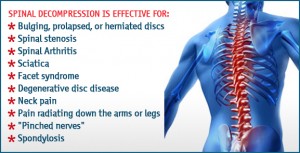 And why not? If you don’t have to undergo an invasive procedure, you won’t have to worry about the potential risks: bleeding, infection, adverse reaction to anesthesia, and others. Plus, a nonsurgical option would certainly be a lot less expensive in comparison to a surgical procedure. One possible back pain solution is the spinal decompression therapy.
And why not? If you don’t have to undergo an invasive procedure, you won’t have to worry about the potential risks: bleeding, infection, adverse reaction to anesthesia, and others. Plus, a nonsurgical option would certainly be a lot less expensive in comparison to a surgical procedure. One possible back pain solution is the spinal decompression therapy.
Spinal decompression therapy, NYC residents might want to know, relieves back pain by gently stretching the spine on a traction table or any motorized device. Stretching the spine allows for change in its position and its force that leads to alleviating the pressure off the spinal discs.
The nonsurgical treatment is recommended for people who experience back pain due to disc herniation, degenerative discs, worn spinal joints (also known as posterior facet syndrome), and injured spinal nerve roots. Spinal decompression, NYC residents would want to know, is not ideal for anyone who has had unsuccessful back surgery, anyone with a spinal tumor, stenosis, or infection, anyone with advanced osteoporosis, Ankylosing spondylitis, or anyone who has already had multiple surgeries.
How does this therapy take place? First thing to note is that you will be fully clothed during the therapy. A harness will be fitted around your pelvis, plus another one around your trunk. You will then lie down — face up or face down — on a computer-controlled table. The computer will then be programmed to customize your treatment. A treatment will generally last from 30 to 45 minutes.
Typical spinal decompression therapy will comprise of 15 to 30 sessions; the number of your sessions will depend on your condition and the findings of your specialist. The costs for each session will vary.
Your specialist may also require you to do certain things before and after the sessions, like performing exercises to improve your mobility and strength and to drink a half-gallon of water daily. You’ll want to get these things in writing so that you don’t forget and you boost your chances of recovery with the nonsurgical therapy.
Back pains are not just physically agonizing, but they can also prevent you from doing what it is you love to do every day. When you’ve got an opportunity to go with a non-invasive treatment, ask your spinal specialist about spinal decompression. And you can maybe start your journey to pain-free days.
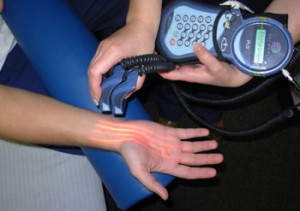 One of the most common conditions believed to come with aging is pain. Sometimes it is caused by certain conditions such as osteoarthritis or bursitis which areusually associated with middle-aged or elderly individuals. Sometimes pain occurs for seemingly no reason at all, other than the result of the everyday wear and tear of aging muscles and ligaments. You may be attending to your regular tasks or activities and pain will come, like a thief in the night, impacting your health and your life in general.
One of the most common conditions believed to come with aging is pain. Sometimes it is caused by certain conditions such as osteoarthritis or bursitis which areusually associated with middle-aged or elderly individuals. Sometimes pain occurs for seemingly no reason at all, other than the result of the everyday wear and tear of aging muscles and ligaments. You may be attending to your regular tasks or activities and pain will come, like a thief in the night, impacting your health and your life in general.
The good news is you can do something about it – who says pain is a “normal” part of aging? Moreover, new innovations and advanced medical research have opened new possibilities for managing, reducing and eliminating pain. When it seems like nothing seems to work, you could turn to cutting-edge technology to see if there’s a solution that could elevate or complement your pain management program.
One of the relatively high-tech healing methods today is cold laser therapy. NYC practitioners recommend this for fast and effective healing. It’s not new per se – it was developed 30 years ago, but in medical research timelinesand in the field of pain relief,cold laser therapy can still be considered a newcomer compared to older methods such as acupuncture. Moreover, the succeeding improvements and developments in cold laser technology through the years lead to the creation of newer, betterversions than before.
Cold laser therapy is recommended for pain relief because of the following benefits it offers:
Painless accuracy.Hot medical lasers can create incisions and can be unbearably painful. Cold laser, also called low-level laser, is painless and non-invasive. It emits light protons that penetrates the skinin the affected areaand provides the body the energy it needs for tissue healing andrepair.
Fast and simple procedure. The duration of each session depends on each patient – it can last for 10 minutes to one hour. No medication or surgery is used, and it is done as an outpatient procedure.
Dramatic results.Cold laser can reach injuries thatare deep inside the body – something that other methods of pain relief can’t – resulting in accelerated reduction of inflammation and significant pain relief.
Additional benefits. Cold laser provides more than just pain relief. It promotes healthy blood circulation andimproves mobility. It helps the regeneration and healing of nerves, muscles, bones, joints, ligaments, joints and tissues.
Cold laser is indicated for a wide variety of painful conditions, including low back or neck pain, muscle injuries, sprains, disc problems, plantar fasciitis, tendonitis, epicondylitis and carpal tunnel syndrome.
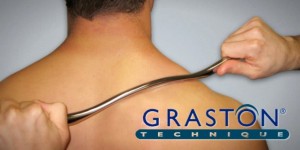 Chronic conditions. Acute injuries. Overuse strains. If you live with any of those three, you are likely to be living with some degree of pain. In some cases, pain may be relieved with over-the-counter medication, specific massages, and physical therapy. In other cases, a more innovative approach may be required. One such innovative treatment is called Graston Technique.
Chronic conditions. Acute injuries. Overuse strains. If you live with any of those three, you are likely to be living with some degree of pain. In some cases, pain may be relieved with over-the-counter medication, specific massages, and physical therapy. In other cases, a more innovative approach may be required. One such innovative treatment is called Graston Technique.
Graston Technique is soft tissue instrument-assisted mobilization, one of many manual therapies that use an instrument. Graston, NYC residents would want to know, is designed to relieve pain as well as address a number of functional limitations. The Graston therapy is able to do this in multiple ways: by reducing restriction through connective tissue stretching, in order to rearrange the structure of the soft tissue; by breaking down the scar tissue and fascia restrictions; and by furthering a better healing environment for the soft tissue.
The instrument is designed to help practitioners like chiropractors, occupational therapists, physical therapists, osteopathic physicians, and licensed athletic trainers pinpoint areas of restriction and break up scar tissue. You can expect to see stainless steel tools in concave and convex shapes. The six core tools, which are used to look over and discover areas of injured fibrotic tissue, will have round edges.
But how does the technique go? Your licensed practitioner will re-introduce small amounts of trauma to the affected area through cross-friction massage. This will mean rubbing or brushing against the grain of the tissue. The process, which increases blood flow in and around the area, brings about healing.
This form of instrument-assisted therapy can promote faster rehabilitation. It can reduce your need for anti-inflammatory medication. It can even treat chronic conditions that were once thought to be permanent. And best of all, the Graston Technique can shorten your overall treatment time.
The Graston Technique can treat the following conditions:
When your specialist has recommended the Graston Technique, make sure to ask about what you can expect before and after your treatment. Generally, patients may be asked to finish five minutes of cardiovascular activity and heat treatment or ultrasound may be given to the injured tissue. Treatment time, per area, may be 30 to 60 seconds, and you may feel some form of discomfort during the therapy. Your practitioner may tell you to apply ice for 15 to 20 minutes to relieve the discomfort.
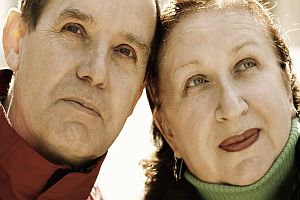 Our culture places a lot of value on maintaining our youth for as long as possible. But no matter how hard you try and how many products you buy that guarantee you a more youthful appearance, we all eventually grow old. But getting older does not necessarily mean that life is all downhill from the age of 30. There are considerable benefits—both mental and emotional—to be gained from growing older.
Our culture places a lot of value on maintaining our youth for as long as possible. But no matter how hard you try and how many products you buy that guarantee you a more youthful appearance, we all eventually grow old. But getting older does not necessarily mean that life is all downhill from the age of 30. There are considerable benefits—both mental and emotional—to be gained from growing older.
Our younger brain may be speedier and have better short-term memory, but as we age our brains become much better at problem-solving and dealing with complex tasks. A youthful brain can’t see the forest for the trees. Older people may not be able to see each tree as clearly, but they’re often better at finding their way out of the forest. The Seattle Longitudinal Study followed 6,000 people for over 40 years and tracked their mental abilities. The study found that people between ages 40 and 60 performed better on inductive reasoning, vocabulary and spatial orientation tests than those in their 20s.
We also become happier as we age. Research has shown that this is due in part to the action of the area of the brain called the amygdala, which is responsible for our emotional stability. When shown photos of positive events, brain scans showed the amygdala of both young people in their 20s and older people in their 70s lit up equally. However, when shown pictures of negative events, only the amygdala of the young people showed much activity. Older people are better at regulating anger and other negative emotions. According to Dr. Gene D. Cohen, director of the center on aging, health and humanities at George Washington University, “The highs may be just as high, but the lows are not as low.”
As we grow older, we also care less about what others think of us and are more comfortable in our own skins. We are not as concerned about fitting in or meeting other people’s expectations about what it is to be successful, which reduces the amount of stress in our lives. Studies have shown that levels of stress drop significantly after age 50.
While health-wise, our bodies may begin to develop some problems, there are still some benefits to aging. Although people over age 65 are at greater risk of contracting the normal seasonal flu, they are also less likely to contract the more serious flu pandemics than those who are younger. Scientists explain that the immune system of older people “remembers” having been exposed to these viruses earlier in life and is able to defend against them, whereas younger people have not had the benefit of years of exposure during which they can build up immunity.
Older people are more stable and secure and have usually built up a sufficient amount of money to live comfortably. They do not have the demands of work and children, and gain considerable satisfaction from mentoring others. Karl Pillemer, a sociologist from Cornell University, who interviewed over 1,200 older people for his book, 30 Lessons for Living: Tried and True Advice from the Wisest Americans, said “We have a seriously negative stereotype of the 70s and beyond, and that stereotype is typically incorrect.” He explained that the elderly people he interviewed were more likely to “describe the last five or ten years as the happiest years of their lives.”